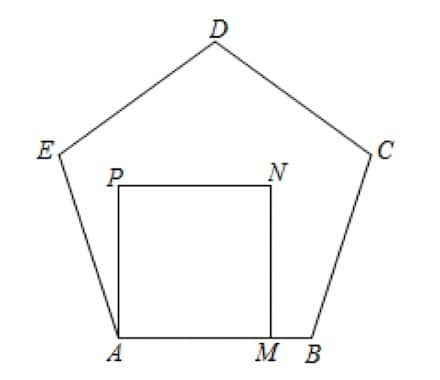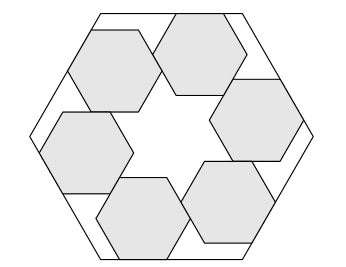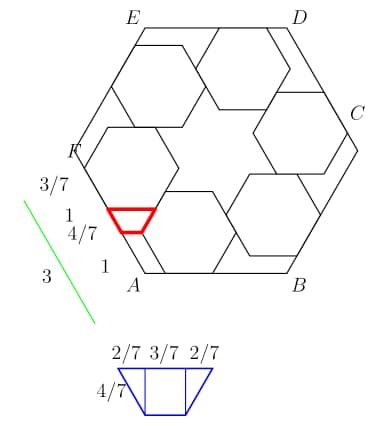AMC 10 Daily Practice - Polygons
Complete problem set with solutions and individual problem pages
As shown in the diagram, the side of the square lies on the side of the regular pentagon , what is the measure of ?

- A.
- B.
- C.
- D.
- E.
quadrilateral is a square, pentagon is regular, , ,
, si the answer is .
Given that the distance from the center of a regular dodecagon (-sided polygon) to one of its vertices is , and the internal blank area is composed of squares and triangles, the area of the shaded region is .
- A.
- B.
- C.
- D.
- E.
Solution 1:
[Note: represent the side length of dodecagon]
Solution 2:
[Note: represent the side length of dodecagon]
Six regular hexagonal blocks of side length 1 unit are arranged inside a regular hexagonal frame. Each block lies along an inside edge of the frame and is aligned with two other blocks, as shown in the figure below. The distance from any corner of the frame to the nearest vertex of a block is unit. What is the area of the region inside the frame not occupied by the blocks? (2023 AMC 10A problems, Question #24)

- A.
- B.
- C.
- D.
- E.

Examining the red isosceles trapezoid with and as two bases, we know that the side lengths are from triangle.
We can conclude that the big hexagon has side length 3.
Thus the target area is: area of the big hexagon - 6 * area of the small hexagon.
- 1
- 2
- 3
